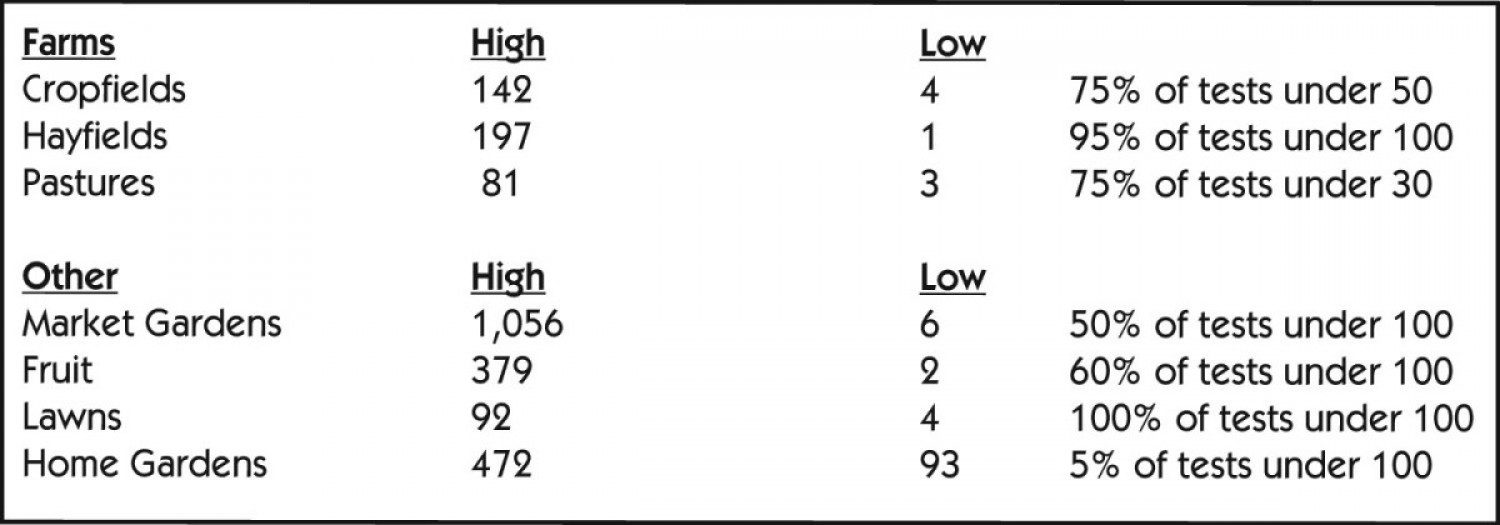The Medina SWCD just completed a soil testing project in cooperation with Spencer Feed and Supply, located in Spencer, Ohio, in the western part of Medina County. Their service area is mostly in the headwaters of the Black River Watershed to Lake Erie.
Participants included grain farms, livestock farms, Amish operations, horse owners, specialty vegetables, fruit growers, market gardens, home gardens and lawns.
Soil tests, education.
The district received a $1,000 nutrient management grant from the ODNR, Division of Soil and Water Resources and passed it on to owner Julia Carle of Spencer Feed and Supply. Their end of the bargain was to offer half price soil tests for interested customers and keep track of test results for general comparison of the main nutrient — phosphorus, the leading nutrient causing algae issues.
Our end of the bargain was to provide additional outreach at various venues promoting landowners take advantage of the opportunity. These included agribusiness open houses, soil testing seminars, referrals, field visits, newsletters, nutrient management discussions, EQIP program and certain practices, pasture walks and the county fair.
Other items like organic matter, potassium, magnesium, calcium and pH were also tracked. The future land use or crop was also recorded.
What they found.
We ended up with 64 participants and 190 tests. There were a 117 farm-orient
ed tests, such as cropfields, pastures, hayfields, fruit areas, and tree farms. There were 34 market gardens and 39 home gardens or lawns.
Phosphorus levels varied across the board. The soil testing method utilized was the Bray-p1 method of pounds per acre.
A good maintenance level for production purposes would be 30-50 pounds per acre. You can see from the adjacent chart what the soil tests showed.
From these results, home gardens had the highest concentrations of phosphorus and next highest was market gardens. The lowest concentration of phosphorus was in pastures.
Before the fingerpointing begins, it is pertinent to state that landowners who raise vegetables like their phosphorus and those who raise commodities, livestock and hay may be less inclined to overapply phosphorus due to costs on larger acreages.
Some participants could, and should, back off on some phosphorus and some others could add some more for proper nutrient balancing.
A trend? Is there likelihood for similar results statewide? Perhaps, with similar participant types.
In reviewing the results with Carle, many landowners were surprised with their testing results. Carle and her staff also were surprised at the results, but were also willing to alter and adjust their recommendations of various nutrient application rates, especially phosphorus.
For not a lot of money, this turned to out to be a great educational activity for everyone.
STAY INFORMED. SIGN UP!
Up-to-date agriculture news in your inbox!













